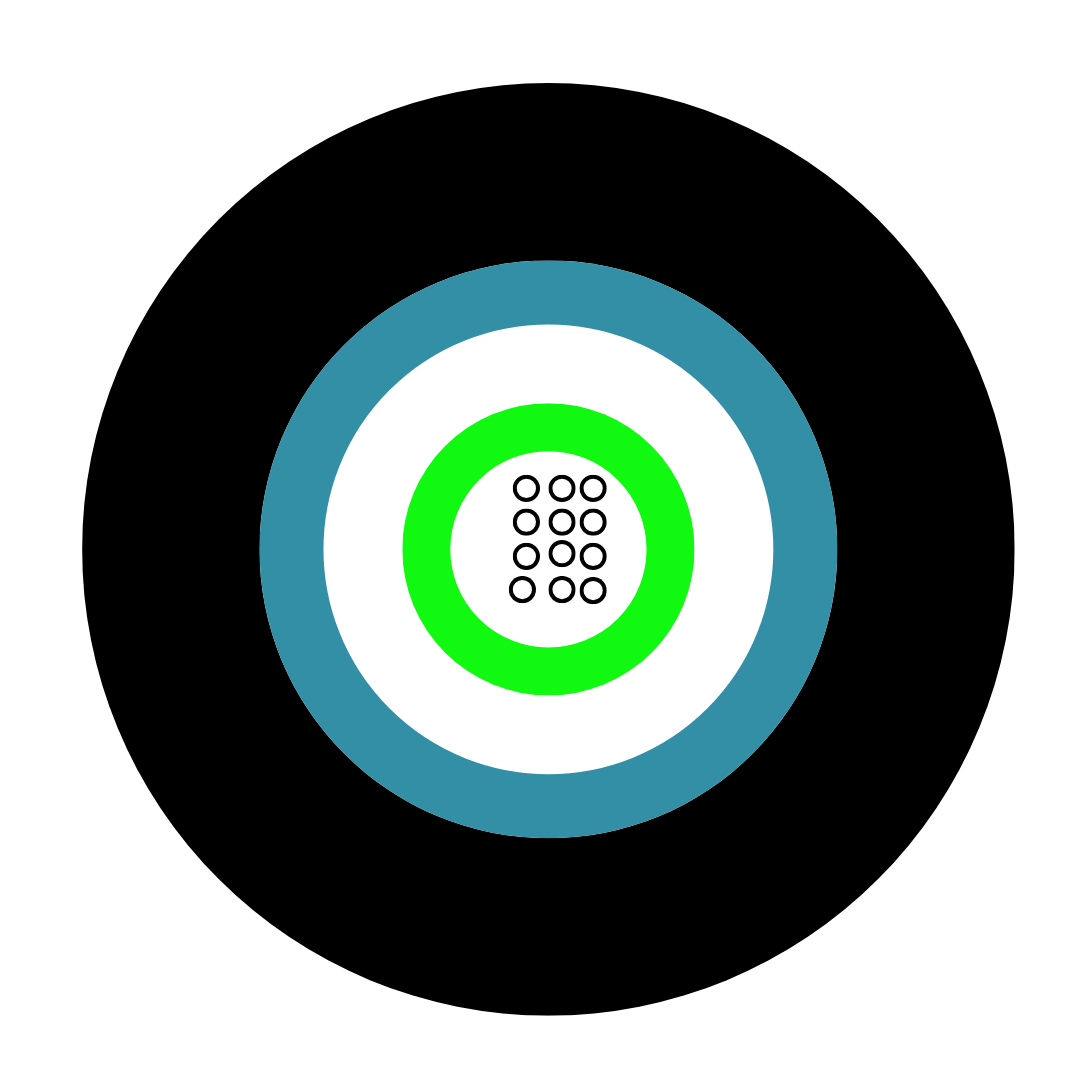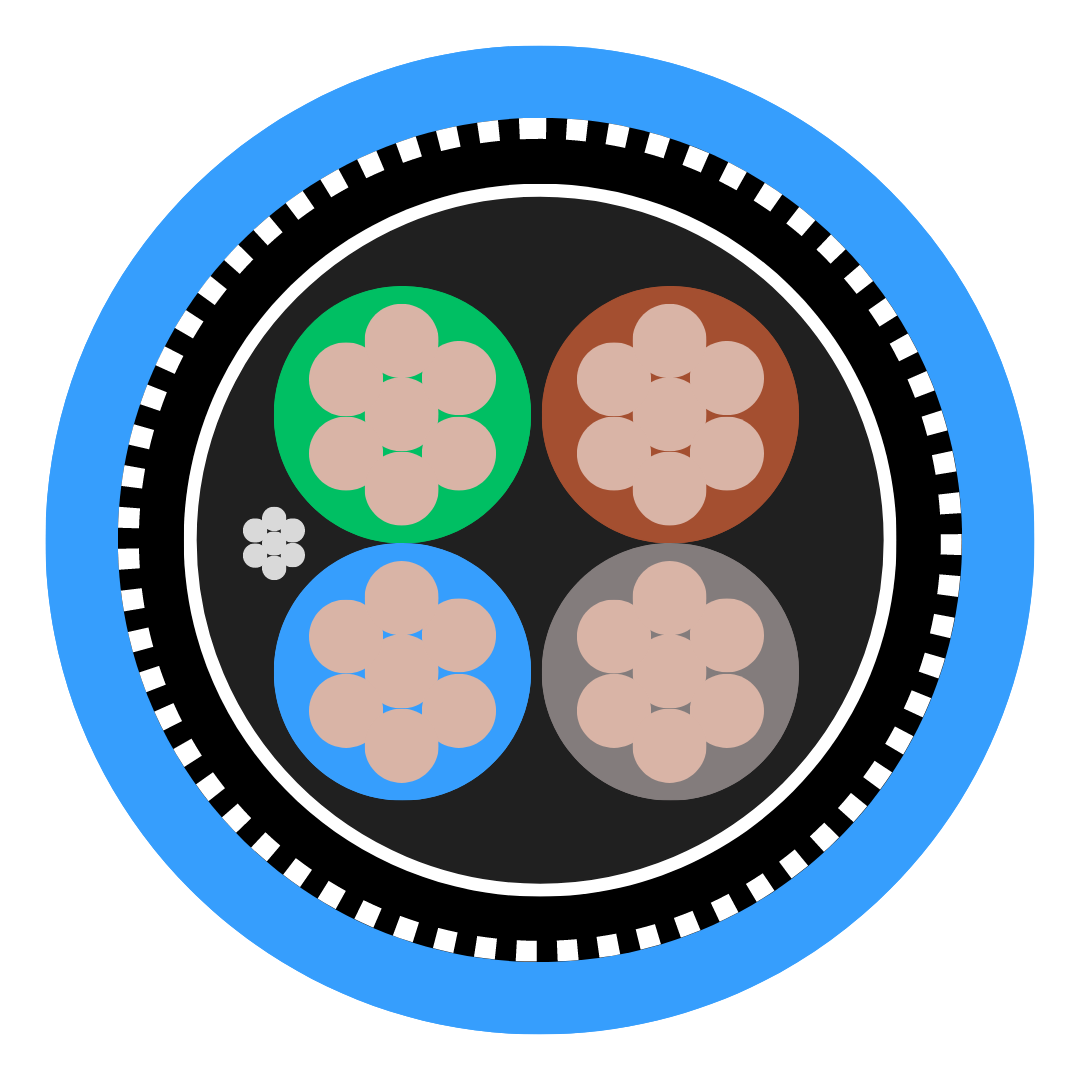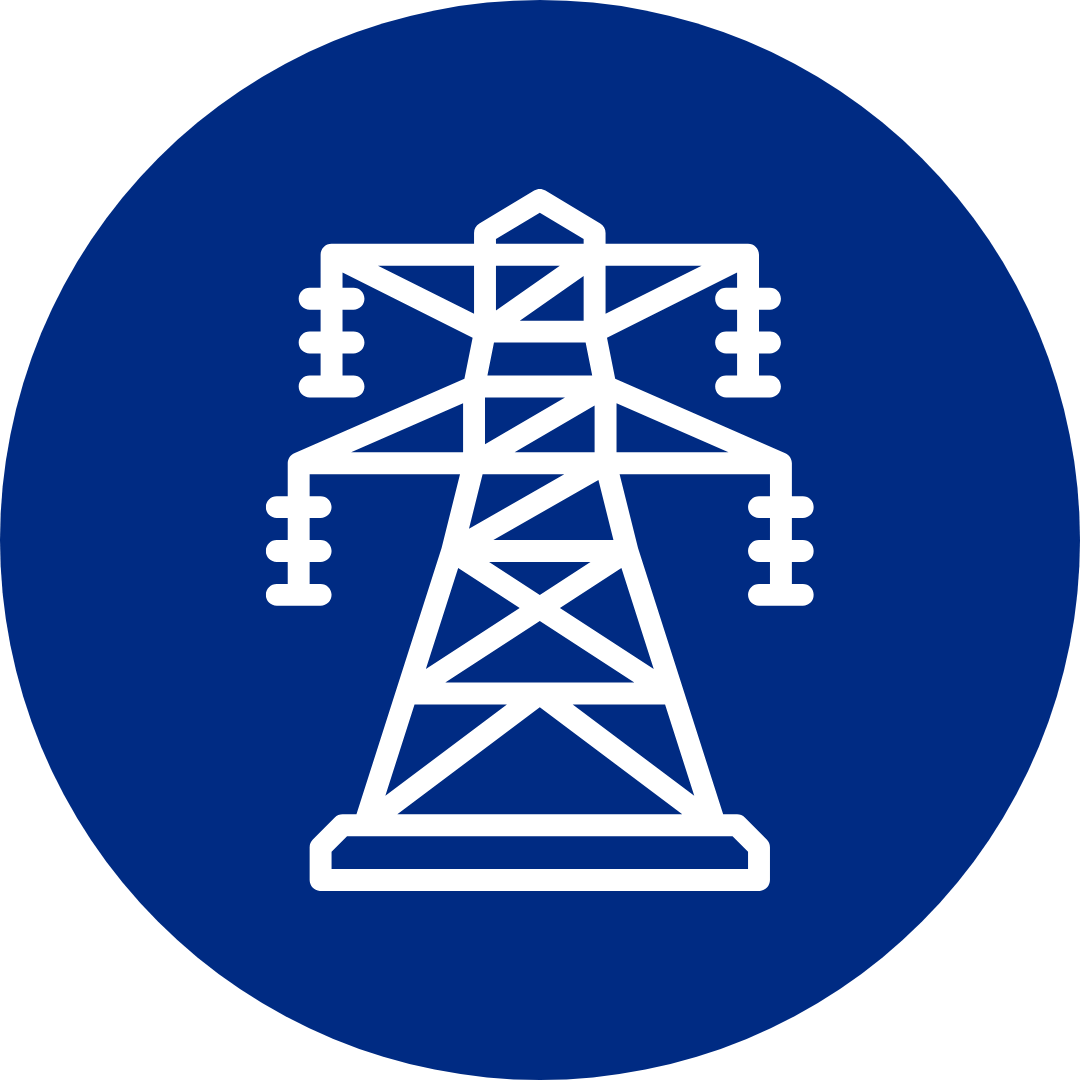YY, SY, and CY cables are commonly used for control and signal applications in the UK, but many people find their differences confusing. These cables have unique features and specifications, and each type is suitable for certain situations. Understanding the difference between YY, SY, and CY cables helps ensure the right cable is chosen for the job, improving safety and performance.
While these cables may look similar from the outside, their construction and recommended uses vary. Some are flexible for easy installation, while others have added mechanical protection or EMI shielding. The latest guidelines suggest that these cables are not recommended for fixed installations under the IET Wiring Regulations (BS 7671). Knowing these facts can help prevent costly mistakes.
Key Takeaways
YY, SY, and CY cables are control cables with unique properties.
Each cable is designed for specific uses and environments.
UK regulations do not recommend these cables for fixed installations.
What Is a YY Cable?
A YY cable is a flexible control cable commonly used for connecting equipment and transmitting signals in industrial settings. It is unscreened, available in many core sizes, and built with copper conductors and a tough PVC sheath for added protection.
What Does a YY Cable Do
YY control cables transmit signals and power in applications where equipment needs to be controlled or monitored. These cables are mostly used in automation, assembly lines, and production plants.
YY cables do not have any extra shielding, so they are best suited for installations where electrical interference is minimal. This makes them ideal for light mechanical conditions where flexibility and durability are needed.
Most YY cables are multi-core, with each core made of copper conductors. Their flexible construction makes them easy to route around machinery and inside control panels. The outer sheath is designed to withstand oils and chemicals often found in industrial environments.
They are not normally used for fixed power supplies or under high mechanical stress. Instead, they focus on safe, reliable performance for light-duty control tasks.
How to Recognise YY Cable
YY cables stand out because they are unscreened, multi-core control cables with a smooth, usually grey, PVC outer sheath. Each core inside is colour-coded (numbered or colour-marked) for easy identification during installation and maintenance.
A typical YY cable will have fine copper strands for flexibility. The cables often range from 2 to over 60 cores, allowing for a wide range of uses. The marking “YY” is often printed or embossed on the sheath—it’s a quick way to check what type of cable is being used.
When comparing YY to other flexible cables, remember that it does not have any metallic braid or foil for screening. This is a key feature that helps to distinguish it from SY or CY cables.
Physical inspection should focus on:
Outer sheath: smooth, flexible PVC
Core identification: colour or number markings
“YY” marking: visible on the outer sheath
Examples of use include wiring for conveyor belts, robotics, and simple control devices.
Potential Issues
One main issue with YY cables is their lack of screening, which leaves them more vulnerable to electromagnetic interference (EMI). This can lead to signal disruption, especially in environments with high electrical noise.
YY cables sometimes have thinner insulation or sheathing than standard power cables. This means extra care is needed during installation to avoid damage that could affect performance or safety.
In the UK, YY cables are not recommended for fixed mains power installations under BS 7671. Using the wrong cable type for fixed wiring could result in non-compliance with UK wiring rules.
Improper use in places with harsh mechanical stress or strong interference can shorten the cable’s life. Routine checks and proper cable routing help reduce such risks.
Fixes
To address EMI issues, it is better to use YY cables only in low-interference areas or consider screened cable types like CY or SY for more demanding sites. Keeping YY cables away from sources of high electrical noise can also help.
If physical damage to the insulation or sheath has happened, the damaged cable section should be replaced immediately. Avoid running YY cables through sharp edges or where they may be crushed or pinched.
For installations covered by the IET Wiring Regulations, select a cable type which complies with UK standards for fixed setup. Always check local wiring rules before using YY cables in permanent installations.
Routine inspection can help spot early signs of wear, such as cracking or flattening. Proper cable management including clips, guides, or trunking offers more protection and can prevent faults or breakdowns.
What Is a SY Cable?
SY cables are commonly used in industrial environments where protection from mechanical impacts is necessary. Their unique construction makes them both flexible and reliable for a range of control applications.
What Does a SY Cable Do
A SY cable is mainly used to connect and control electrical equipment in settings where cables may be moved or potentially struck. It is designed for applications that require both protection and flexibility, such as control circuits, assembly lines, conveyors, and machine tools.
The SY cable features a transparent PVC outer sheath and a galvanised steel wire braid (GSWB) beneath, which increases its resistance to mechanical stress. This braid allows the cable to bend and flex while still shielding the conductors from knocks, compression, and abrasion in medium to high mechanical environments.
Unlike standard power cables, SY cables are not intended for main power distribution. Instead, they are ideal for instrumentation and automation systems. This makes them popular in factories and plants where equipment is often rearranged or serviced.
SY cables are capable of handling low to medium voltage levels, suiting them for control signals rather than carrying high-voltage power. Their use is widespread within the UK and across many industrial sectors.
How to Recognise SY Cable
Identifying a SY cable is simple if you know what to look for. The most noticeable feature is the braid of thin galvanised steel wires, visible just beneath the outer sheath. This gives the cable a slightly metallic, mesh-like appearance.
The outer sheath is clear PVC, allowing easy visual inspection of the steel wire braid inside. This transparency helps users quickly confirm the cable type during installation or maintenance.
SY cables are available in a variety of core sizes and numbers. Each core is individually insulated, usually in different colours for easy identification. The cable is also quite flexible compared to others with similar levels of mechanical protection.
Common places to spot SY cable include industrial control panels, production machinery, and automated systems. When buying, always check for clear labelling, such as "SY" printed on the sheath, to ensure the correct type is chosen.
Potential Issues
Though SY cables are robust, they are not perfect for every setting. One issue is their lack of official certification for fixed installation in some regions, such as under the IET Wiring Regulations (BS 7671) in the UK. This might cause issues with compliance during inspections.
The transparent sheath, while useful for identification, can discolour or degrade over time, especially in areas exposed to sunlight or certain chemicals. This can make the steel wire braid less visible and harder to check for damage.
SY cables can also be over-specified if used in low-risk environments, leading to unnecessary costs. While the steel braid offers increased protection, it does not provide full EMC (electromagnetic compatibility) shielding, which is sometimes needed for sensitive equipment.
If the installation environment is subject to corrosive chemicals, the galvanised steel wire braid may also corrode, which can reduce mechanical strength and flexibility over time.
Fixes
To address compliance concerns, installers should use SY cable only where permitted and check local wiring rules before installation. For fixed wiring in buildings, it is usually better to use cables certified for that purpose.
To prevent the outer sheath from degrading, avoid installing SY cable in direct sunlight or areas exposed to harsh chemicals. If outdoor use is necessary, consider protective trunking or conduits.
Routine inspection is important. Check the condition of the sheath and the steel wire braid regularly, especially in high-movement areas. Replace cables at the first signs of discolouration, brittleness, or corrosion.
Where electromagnetic interference is a concern, consider using a CY cable instead, as it includes a copper braid for improved shielding. Always select the correct cable for the task by looking at the specific demands of the installation.
Below is a quick summary for reference:
Problem | Solution |
Not certified for fixed use | Use in suitable, approved environments |
UV/chemical damage | Install away from sunlight/chemicals |
Mechanical damage | Regular inspection and maintenance |
EMC requirements | Use CY cable if better shielding is needed |
What Is a CY Cable?
A CY cable is a type of flexible control cable, mainly used for connecting equipment where precise data or signals are exchanged. It is built for environments where electrical interference is a concern and reliable signal integrity is needed.
What Does a CY Cable Do
CY cable is designed for transmitting signals and data with minimal interference. The main feature is its tinned copper braid, which acts as a screen to block electromagnetic interference (EMI). This quality makes CY cables suitable for control panels, industrial machinery, and laboratory equipment.
When devices are placed close together, signals can get mixed or lost because of EMI. CY cables help prevent this by shielding the internal conductors. They are preferred in places where accurate control signals are necessary for safety or precise operation, like in manufacturing lines or automation systems.
Because of their shielding, CY cables are used when basic control or power cables would not give enough protection. Their main job is to keep data and control signals stable and free from outside electrical noise.
How to Recognise CY Cable
A CY cable is easy to spot if you look at its structure. The key points are:
Braid Shield: It has a transparent or grey PVC outer sheath with a visible, tight tinned copper wire braid just underneath.
Core Colours: Multiple cores, often differently coloured or numbered, run through the centre of the cable.
Markings: The sheath may be marked with ‘CY’ or technical information such as voltage ratings.
Below is a simple comparison:
Feature | CY Cable | Other Control Cables |
Screening | Tinned copper braid | No braid (e.g., YY), or steel braid (SY) |
Flexibility | High | Medium or high |
Sheath | Clear/Grey PVC | Grey PVC (YY/SY) |
The tinned copper braid is the most visible and unique sign someone is dealing with a CY cable.
Potential Issues
CY cables are not suited for every job or environment. One main issue is that they may not have as thick insulation or sheath as other heavy-duty cables, which may affect their durability in physically demanding settings.
They are mainly for indoor use and are not typically UV resistant, so they should not be installed outdoors or directly buried. In environments with high mechanical stress, the braid can also wear through the sheath if not protected.
Another concern is that CY cables are currently not recommended for fixed installations in the UK, like those covered by the IET Wiring Regulations BS 7671. This makes them unsuitable for permanent wiring in buildings, even though they are often used for movable or flexible connections in machinery.
Fixes
To deal with durability issues, it is best to use CY cables only in places where there is little chance of mechanical damage. Installing them inside trunking or conduit can help prevent the braid from wearing through the sheath.
If a longer lifecycle is needed or cables are often moved, choosing a CY cable with extra inner and outer sheath thickness can help. For safety, always follow the manufacturer's guidance about where CY cables can be safely used.
For environments with outdoor exposure, users should switch to cables rated for UV and weather resistance. If EMI is not a concern, consider using a YY cable, which does not have a copper braid but may offer better physical protection. Always check for BASEC certification or approval to ensure the cable meets current safety standards for the UK.
Frequently Asked Questions
What is sy and cy?
SY and CY cables are both types of control cables used in industrial machinery, automation, and building automation. SY cables have a galvanised steel wire braid for added mechanical protection. CY cables have a tinned copper wire braid, offering good electromagnetic protection but less mechanical strength compared to SY.
What is a yy type cable?
YY cables are flexible control cables with plain copper conductors and a PVC sheath. They are commonly used in control panels and industrial automation systems where only light mechanical stress is expected. These cables do not offer extra screening or mechanical protection.
Can I use SY cable in the UK?
SY cables are sometimes used in the UK for control and power cable tasks in machinery and automation. However, they are not recommended by the IET Wiring Regulations (BS 7671) for fixed installations. The main concern is that SY cables might not have the required insulation thickness for certain fixed wiring setups.
What does sy stand for in cable?
SY in cable names stands for Steel Wire. It refers to the steel wire braid that covers the cable and offers protection against physical damage. This makes SY cables suitable for environments where medium to high mechanical stress is present.
What does yy mean on cable?
YY stands for a type of unscreened flexible control cable. The letters do not have a specific meaning but have become industry shorthand for this style of power and control cable with plain copper conductors and a PVC sheath, used in low mechanical stress settings.
What is a CY cable?
A CY cable is a screened flexible control cable. It has a tinned copper wire braid underneath the sheath, which helps limit electromagnetic interference. CY cables are often used when noise from electrical equipment could affect signal quality in control and automation systems.
What is yfy cable?
YFY cable is not a commonly recognised standard cable type in the UK. It is possible this refers to a less common or region-specific cable, or may be a misreading of YY or another type. Always check local standards and guidance for the correct cable types for each application.
Alarm Cable
Arctic Grade Cable
Armoured Cable
Audio & Speaker Cable
Auto Cable
Bare Copper
Belden Equivalent Cable
Co-axial Cable
Data Cable
DC Telecom Cable
Defence Standard Cable
Emergency Lighting & Fire Detection Cable
EV Cable
Festoon
![Loose Tube Fibre Cross Section]()
Fixed Wiring PVC & LSOH Cable
Flatform
Flexible Control Cable
Flexible PVC Cable
Flexible Rubber Cable
General Wiring Cable PVC & LSOH
High Temperature Cable
High Voltage Cable
![5308 p1 t2 cat Cross Section]()
LSOH Flexible Cable
Medium Voltage Cable
NYY & N2XH Cable
Protected Wiring Cable
Silicone Cable
Solar Cable
Split Concentric Cable
Spiral Cable
Temporary Power Cable
Tri-Rated Cable
Welding Cable
Alarm Cable
Arctic Grade Cable
Armoured Cable
Audio & Speaker Cable
Auto Cable
Bare Copper
Belden Equivalent Cable
Co-axial Cable
Data Cable
DC Telecom Cable
Defence Standard Cable
Emergency Lighting & Fire Detection Cable
EV Cable
Festoon
![Loose Tube Fibre Cross Section]()
Fixed Wiring PVC & LSOH Cable
Flatform
Flexible Control Cable
Flexible PVC Cable
Flexible Rubber Cable
General Wiring Cable PVC & LSOH
High Temperature Cable
High Voltage Cable
![5308 p1 t2 cat Cross Section]()
LSOH Flexible Cable
Medium Voltage Cable
NYY & N2XH Cable
PAS - BS5308 Instrumentation Cable
Protected Wiring Cable
RS-232 Cable
RS-485 Cable
Silicone Cable
Solar Cable
Split Concentric Cable
Spiral Cable
Telephone Cable
Traffic Signal Cables
Temporary Power Cable
Tri-Rated Cable
Welding Cable
Airports
Automation & Process Control
![Automotive]()
Building & Construction
Communication & Telecommunication
Data Centres
Defence
![DNO 1]()
E-Mobility
Food & Beverage
Marine & Offshore
Mining, Drilling & Tunnelling
OEMs
Oil, Gas & Petrochemical
Rail & Metro
Renewable Energy
Switchgear
Power
Water Treatment













































